
A typical SKF rolling bearing consists of the following components:
- an inner ring
- an outer ring
- balls or rollers, as rolling elements
- a cage
SKF supplies several bearing types capped with a seal or shield on one or both sides. SKF bearings capped on both sides are factory-filled with grease. They provide an economic and space-saving solution compared to external sealing.
SKF bearing rings material
The pressure at the rolling contact area and the cyclic over rolling creates fatigue in the bearing rings when the SKF bearing is in operation. To cope with such fatigue, rings that are made of steel must be hardened.
The standard steel for SKF bearing rings and washers is 100Cr6, a steel containing approximately 1% carbon and 1,5% chromium.
SKF bearing rings and washers are made of steel in accordance with SKF specifications. They cover all aspects that are relevant to providing a long service life for the bearing. Depending on specific requirements, SKF uses stainless steels (e.g. SKF stainless steel deep groove ball bearings) or high-temperature steels.
SKF rolling elements material
The rolling elements (balls or rollers) transfer the load between inner and outer rings. Typically, the same steel is used for rolling elements as for bearing rings and washers. When required, rolling elements can be made of ceramic material. SKF bearings containing ceramic rolling elements are considered hybrid bearings and are becoming more and more common.
Types and materials of SKF cages
The primary purposes of a cage are:
- separating the rolling elements to reduce the frictional heat generated in the bearing
- keeping the rolling elements evenly spaced to optimize load distribution
- guiding the rolling elements in the unloaded zone of the bearing
- retaining the rolling elements of separable bearings when one bearing ring is removed during mounting or dismounting
Cages are radially centred either on: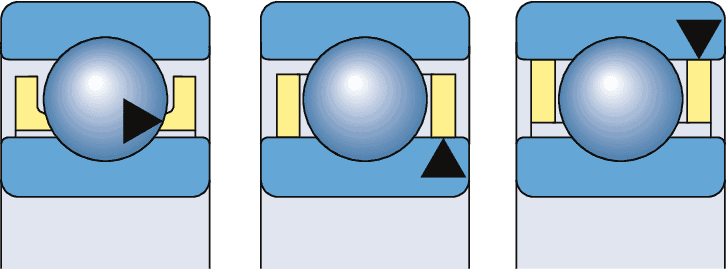
- the rolling elements
- the inner ring
- the outer ring
Cages centred on the rolling elements permit the lubricant to enter the bearing easily. Ring centred cages, which provide more precise guidance, are typically used when bearings must accommodate high speeds, high vibration levels or inertia forces stemming from movements of the whole bearing.
The main cage types are:
- Stamped metal cages
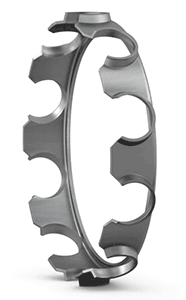
Stamped metal cages (sheet steel or sometimes sheet brass) are lightweight and withstand high temperatures. - Machined metal cages
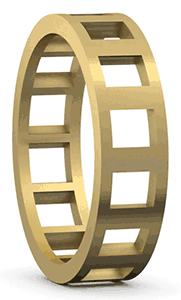
Machined metal cages are made of brass or sometimes steel or light alloy. They permit high speeds, temperatures, accelerations and vibrations. - Polymer cages
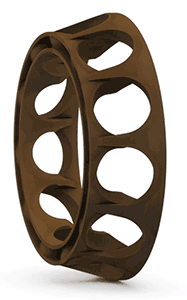
Polymer cages are made of polyamide 66 (PA66), polyamide 46 (PA46) or sometimes polyetheretherketone (PEEK) or other polymer materials. The good sliding properties of polymer cages produce little friction and, therefore, permit high speeds. Under poor lubrication conditions, these cages reduce the risk of seizure and secondary damage because they can operate for some time with limited lubrication. - Pin-type cages
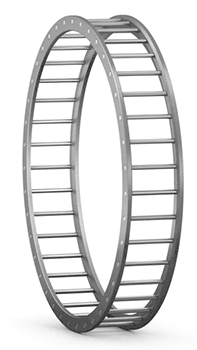
Steel pin-type cages need pierced rollers and are only used together with large-sized roller bearings. These cages have relatively low weight and enable a large number of rollers to be incorporated.
Integral sealing
Integral sealing can significantly prolong bearing service life because it keeps lubricant in the bearing and contaminants out of it. SKF bearings are available with various capping devices:
- Shields
There is a small gap between the shield and inner ring. Bearings fitted with shields are used where the operating conditions are relatively clean, or where low friction is important because of speed or operating temperature considerations. - Seals
Bearings with seals are preferred for arrangements where contamination is moderate. Where the presence of water or moisture cannot be ruled out, contact seals are typically used. These seals make positive contact with the sliding surface on one of the bearing rings. Low-friction seals and non-contact seals can accommodate the same speeds as bearings with shields, but with improved sealing effectiveness.
